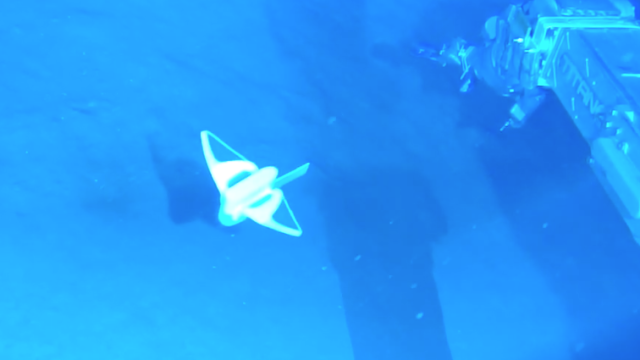The Mariana Trench is the deepest place on Earth and its atmospheric pressure is 1,000 times the standard at sea level. The intense pressurisation of the Trench means humans aren’t able to make the journey without extreme high-tech precautions. Purpose-built high-density submarines and autonomous submersibles were the first to make the trip to the bottom of the Trench — and now a silicone robot has also achieved the impossible.
The soft robot, developed by Guorui Li and other researchers at the Zheijiang University in China, was designed to function under high pressures during deep sea exploration. The components involved were chosen carefully so the robot could continue operation at the lowest parts of the Mariana Trench, where the pressure is the highest anywhere on Earth.
It managed to survive for 45 minutes at the bottom, according to a report published in Nature on Wednesday.
[related_content first=”1106867″]
Its main body is held together by silicone rubber, with electronic components running across its body and fins. Unlike other crafts, it lacks a circuit board. This decision was made to reduce the strain on the device and ensure the pressure didn’t impact its functionality.
It also allows for a unique form of movement: it glides across the ocean using two fins controlled by artificial polymer muscles.

To reach the Trench, the robot was tethered to a submersible at 10,000 metres below sea level. After 45 minutes the team retrieved the robot, which had stopped functioning, and brought it back to the surface.
While it wasn’t able to free swim in the Mariana Trench due to the pressure and the need for further testing, you can see the little guy in action from earlier tests just 3,224 metres below sea level here:
As you can see, it propels itself along using its fins like a manta ray would — but it is fairly slow. The initial paper in Nature reported it moved at a pace of around 5 centimetres a second.
Still, the tech behind the robot is very impressive, as is its capability of survival under high pressure.
With development continuing on the device, it could be that free swimming in the Mariana Trench is viable in future. This would mean unlocking more of the Trench’s secrets and discovering all the strange, nightmare fish spotted roaming the dark depths of the ocean.
As a tool for deep sea exploration, this little robot would be absolutely invaluable.
